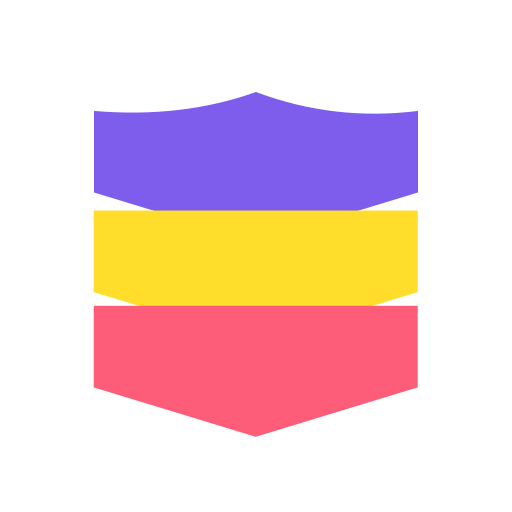free parental control app for iphone and android
In today’s digital age, it is becoming increasingly important for parents to monitor and control their children’s usage of smartphones and other devices. With the vast amount of content available on the internet, it can be challenging for parents to keep track of what their children are accessing and ensure their safety. This is where parental control app s come in – they provide a way for parents to monitor and restrict their child’s usage of their devices. In this article, we will take a closer look at some of the best free parental control apps available for both iPhone and Android devices.
1. FamilyTime
FamilyTime is a comprehensive parental control app that offers a wide range of features to help parents manage their children’s digital activities. With this app, parents can set screen time limits, block inappropriate content, track their child’s location, and even monitor their social media usage. The app also allows parents to remotely control their child’s device, making it an excellent option for busy parents who want to keep an eye on their child’s online activities.
2. Norton Family Premier
Norton Family Premier is a popular choice among parents when it comes to parental control apps. This app allows parents to monitor their child’s internet usage, block inappropriate websites, and even set time limits for specific apps. One unique feature of this app is its ability to block online searches that may contain explicit content. It also has a location tracking feature, allowing parents to know their child’s whereabouts at all times.
3. Qustodio
Qustodio is another top-rated parental control app that offers a variety of features to help parents manage their child’s device usage. With this app, parents can set screen time limits, block inappropriate content, and even monitor their child’s social media activity. It also has a panic button feature that allows children to send an alert to their parents in case of an emergency. Qustodio is available for both iPhone and Android devices, making it a convenient option for families with different devices.
4. OurPact
OurPact is a user-friendly parental control app that allows parents to set screen time limits, block apps, and filter web content. It also has a location tracking feature, which helps parents keep track of their child’s whereabouts. One unique feature of this app is its ability to create a geofence, which sends an automatic alert to parents when their child enters or leaves a designated area. OurPact is available for both iPhone and Android devices and offers a free and premium version.
5. Screen Time Parental Control
Screen Time Parental Control is a popular parental control app that offers a range of features to help parents manage their child’s device usage. With this app, parents can set daily screen time limits, block apps, and filter web content. It also has a bedtime feature, which automatically locks the device during designated hours. One of the unique features of this app is its reward system, where parents can give points to their children for completing tasks, which can then be redeemed for extra screen time.
6. FamiSafe
FamiSafe is a powerful parental control app that offers various features to help parents manage their child’s digital activities. With this app, parents can set screen time limits, block inappropriate content, and monitor their child’s device usage remotely. It also has a suspicious photos feature, which alerts parents if their child receives or sends any inappropriate photos. FamiSafe is available for both iPhone and Android devices and offers a free trial before requiring a subscription.
7. Kaspersky Safe Kids
Kaspersky Safe Kids is a popular parental control app that offers a range of features to help parents manage their child’s online activities. With this app, parents can set screen time limits, block inappropriate content, and monitor their child’s social media usage. It also has a GPS tracker, which allows parents to track their child’s location in real-time. Kaspersky Safe Kids is available for both iPhone and Android devices and offers a free and premium version.
8. Kidslox
Kidslox is a parental control app designed to help parents manage their child’s device usage. With this app, parents can set screen time limits, block apps, and filter web content. It also has a homework mode, which allows parents to temporarily block all apps and websites during designated hours. Kidslox is available for both iPhone and Android devices and offers a free and premium version.
9. Google Family Link
Google Family Link is a parental control app developed by Google that allows parents to monitor and control their child’s device usage. With this app, parents can set screen time limits, block apps, and monitor their child’s location. It also has a remote lock feature, which allows parents to lock their child’s device from their own device. Google Family Link is available for both iPhone and Android devices and is free to use.
10. ESET Parental Control
ESET Parental Control is a simple yet effective parental control app that offers various features to help parents manage their child’s online activities. With this app, parents can set screen time limits, block apps, and filter web content. It also has a child locator feature, which allows parents to track their child’s location in real-time. ESET Parental Control is available for both iPhone and Android devices and offers a free and premium version.
In conclusion, parental control apps offer a way for parents to monitor and control their child’s device usage, ensuring their safety in the digital world. With the increasing availability of these apps, it is now easier than ever for parents to keep track of their child’s activities and set boundaries for their device usage. Whether you have an iPhone or an Android device, there are various free parental control apps available that offer a range of features to help parents manage their child’s online activities. So, download one of these apps today and take the first step in ensuring your child’s digital safety.
battery optimization android
In today’s fast-paced world, our smartphones have become an essential part of our daily lives. From making calls and sending texts to browsing the internet and accessing social media, we rely on our phones for almost everything. However, with all these activities, our phone’s battery life tends to drain quickly, leaving us frantically searching for a charger or a power outlet. This is where battery optimization for Android devices comes into play.
Battery optimization is the process of managing and improving the battery life of your smartphone. It involves identifying and reducing the apps and processes that consume the most battery power, maximizing the efficiency of the phone’s hardware, and implementing various techniques to extend the battery life. In this article, we will discuss everything you need to know about battery optimization for Android devices and how you can make the most out of your phone’s battery.
Understanding Battery Drain on Android Devices:
Before we dive into the details of battery optimization, it is crucial to understand what causes battery drain on Android devices. Some of the common reasons for battery drain include:
1. Screen Brightness: One of the biggest culprits of battery drain is the screen brightness. The brighter your screen is, the more battery power it consumes.
2. Running Apps in the Background: Many apps continue to run in the background even when you are not using them. This consumes a significant amount of battery power.
3. GPS and Location Services: Most apps use your phone’s GPS and location services to track your location, which can drain your battery life.
4. Push Notifications: Apps that send push notifications can also contribute to battery drain, as they require your phone to constantly check for updates.
5. Outdated Apps: Using outdated apps can also drain your battery, as they may not be optimized for the latest software updates.
6. Overcharging: Overcharging your phone’s battery can also damage its overall health and lifespan, leading to faster battery drain.
Now that we have understood the common reasons for battery drain, let’s look at some tips and techniques for battery optimization on Android devices.
Battery Optimization Techniques for Android Devices:
1. Adjust Screen Brightness: As mentioned earlier, the screen brightness is one of the biggest factors contributing to battery drain. By reducing the brightness of your screen, you can significantly improve your phone’s battery life. You can also enable the “Auto-Brightness” feature, which will automatically adjust the brightness according to the lighting conditions.
2. Manage Background Apps: Many apps continue to run in the background, even when you are not actively using them. This not only consumes battery power but also affects your phone’s performance. To manage background apps, you can go to your phone’s “Settings” and look for the “Apps” or “Application Manager” option. Here, you can force stop any apps that you do not want to run in the background.
3. Disable Push Notifications: As mentioned earlier, push notifications can also contribute to battery drain. To disable push notifications for specific apps, you can go to the “Settings” and look for the “Notifications” option. Here, you can select the apps for which you want to disable push notifications.
4. Use Battery Saver Mode: Most Android devices come with a built-in battery saver mode that can help extend your phone’s battery life. When activated, this mode limits the phone’s performance and restricts background apps, thus reducing battery consumption. You can enable this mode by going to your phone’s “Settings” and looking for the “Battery” or “Power Saving” option.
5. Update Your Apps: Using outdated apps can also drain your phone’s battery. Developers often release updates to improve app performance and optimize battery consumption. Make sure to regularly update your apps to ensure optimal battery life.
6. Use Dark Mode: Many Android devices now come with a dark mode feature, which displays a dark background instead of a bright one. This can significantly reduce the strain on your phone’s battery, especially if you have an OLED or AMOLED display.
7. Disable GPS and Location Services: As mentioned earlier, GPS and location services consume a significant amount of battery power. If you do not need these services, make sure to disable them to save battery life. You can do this by going to your phone’s “Settings” and looking for the “Location” or “Location Services” option.
8. Use Wi-Fi Instead of Mobile Data: When using your phone to access the internet, try to connect to a Wi-Fi network instead of using mobile data. Wi-Fi consumes less battery power compared to mobile data, thus extending your phone’s battery life.



9. Turn Off Automatic Syncing: Many apps automatically sync data in the background, which consumes battery power. You can disable automatic syncing by going to your phone’s “Settings” and looking for the “Accounts” or “Sync” option.
10. Uninstall Unused Apps: If you have apps that you no longer use, make sure to uninstall them. These apps may continue to run in the background, consuming battery power without providing any benefit.
Battery Optimization Apps for Android Devices:
Apart from the techniques mentioned above, there are also various battery optimization apps available for Android devices. These apps use various methods to optimize your phone’s battery life, such as hibernating background apps, managing power-intensive processes, and providing real-time battery usage statistics. Some popular battery optimization apps for Android include Greenify, AccuBattery, and Battery Doctor.
In addition to these apps, most Android devices also come with a built-in battery optimization feature that can be accessed through the phone’s settings. This feature provides an overview of your phone’s battery usage and allows you to manage various battery-draining processes and apps.
Conclusion:
In conclusion, battery optimization is crucial for ensuring optimal battery life for your Android device. By following the tips and techniques mentioned in this article, you can significantly improve your phone’s battery life and reduce the need for constant charging. Additionally, it is essential to remember that battery optimization is an ongoing process, and you may need to regularly monitor and adjust your phone’s settings to maintain its battery life. With a little effort and attention, you can make the most out of your phone’s battery and enjoy uninterrupted usage throughout the day.
does ipad have a calculator
The iPad has revolutionized the way we use technology in our daily lives. From checking emails, to watching movies, to creating presentations, the iPad has become an essential tool for many people. One of the most commonly used features of the iPad is its calculator. But does the iPad really have a calculator? In this article, we will explore the different aspects of the iPad calculator and how it has evolved over the years.
To answer the question at hand, yes, the iPad does have a calculator. In fact, it has had a calculator since its very first version was released in 2010. The calculator app comes pre-installed on all iPads and is located in the Utilities folder. This app is a basic calculator that can perform all the basic mathematical operations such as addition, subtraction, multiplication, and division. It also has a few advanced functions such as square root, percentage, and memory functions.
While the calculator app on the iPad may seem like a simple and basic tool, it has undergone several changes and improvements over the years. Let’s take a look at how the iPad calculator has evolved and how it compares to other calculators in the market.
The first version of the iPad calculator was a simple and straightforward app with a gray interface and basic functions. It was designed to resemble a traditional calculator with buttons for each number and operation. The calculator also had a history feature, allowing users to see their previous calculations. However, it lacked scientific functions and was limited in its capabilities.
In 2012, with the release of the iPad Mini, the calculator app got a major update. The interface was changed to a more modern and colorful design, similar to the iPhone’s calculator app. It also added scientific functions, making it more useful for students and professionals. The calculator app on the iPad Mini also introduced a swipe feature, allowing users to swipe left or right to delete numbers or operators.
In 2015, with the release of iOS 9, the calculator app on the iPad got a major overhaul. It was redesigned with a more flat and minimalistic interface, in line with the new design language of iOS. It also added a new feature called “Slide Over,” which allowed users to slide the calculator app from the side of the screen while using another app. This made it easier to perform calculations while using other apps simultaneously.
In 2016, with the release of iOS 10, the calculator app on the iPad got a small but significant update. It added a new feature called “Split View,” which allowed users to have two apps open side by side. This was especially useful for students and professionals who needed to use the calculator app while working on a document or presentation.
The latest version of the iPad calculator, which was released with iOS 11 in 2017, has made some significant improvements. It has a more modern and sleek design, with a bold font and larger buttons for easier use. The calculator app also added a new scientific keyboard, making it easier to input complex equations. It also has a new history feature, allowing users to see their previous calculations in a more organized manner.
While the iPad calculator may seem like a basic and simple app, it has proven to be a useful tool for many people. Its ease of use, portability, and convenient features make it a popular choice for students, professionals, and even for everyday use. However, it is not the only calculator app available for the iPad. There are several third-party calculator apps that offer more advanced features and functions. Let’s take a look at some of the best calculator apps for the iPad.
One of the most popular third-party calculator apps for the iPad is PCalc. It is a powerful scientific calculator with a sleek interface and customizable features. PCalc allows users to perform complex calculations, convert units, and even use hand-drawn calculations. It also has a history feature, making it easy to view and edit previous calculations. The app also offers a widget for quick access to the calculator from the iPad’s home screen.
Another popular calculator app for the iPad is MyScript Calculator. This app takes a unique approach to calculations by allowing users to write equations on the screen with their finger or Apple Pencil. It then converts the handwriting into digital text and solves the equation. MyScript Calculator also has a history feature and supports both basic and advanced functions. It is a great tool for students who prefer to write out their equations rather than type them in.
For those in need of a more graphing-oriented calculator, the GeoGebra Graphing Calculator is a great choice. This app allows users to plot graphs, solve equations, and perform geometric constructions. It also has a clean and user-friendly interface, making it easy to use for both students and professionals. The app also offers a wide range of mathematical tools and functions, making it a comprehensive calculator for all levels.



In conclusion, the iPad does have a calculator, and it has evolved significantly over the years. From a simple and basic app to a powerful and customizable tool, the iPad calculator has come a long way. Whether you are a student, professional, or just someone in need of a quick calculation, the iPad calculator is a convenient and useful tool to have. While there are several third-party calculator apps available, the pre-installed calculator app on the iPad offers enough features and functions for most users. With its portability and convenience, the iPad calculator has become an essential tool for many people in their daily lives.
